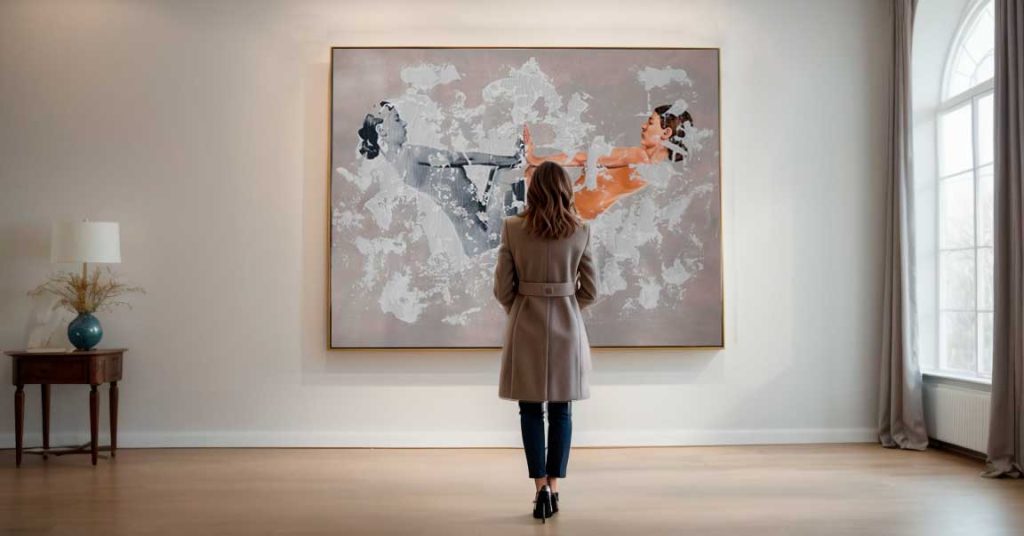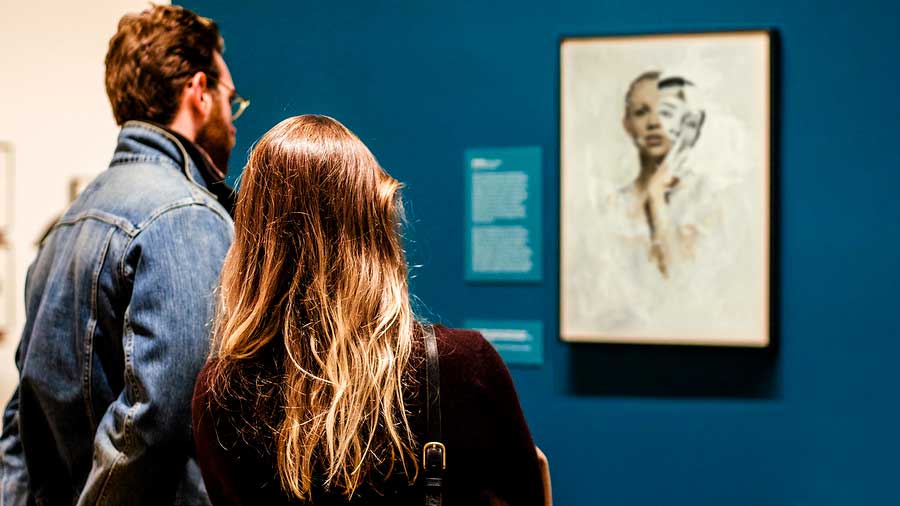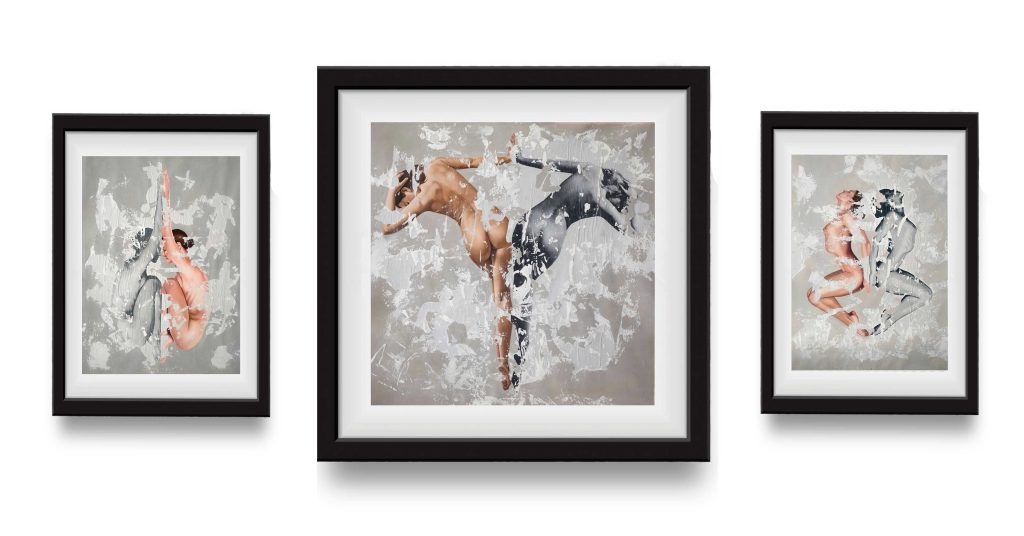
Introduction
Welcome to the World of Artful Giving
Have you ever wondered what to give someone who has everything? Or how to make a lasting impression on a special occasion? Or how to express your appreciation and admiration for someone you care about? If you answered yes to any of these questions, then you are in the right place. Welcome to the world of artful giving, where you can discover the power and beauty of gifting art.
The Enduring Charm of Gifting Art
Art is more than just a decoration or a hobby. It is a form of expression, communication, and connection. With the ability to convey emotions, stories, and messages beyond words, art inspires, challenges, and delights. Gifting art becomes a charming and meaningful celebration, enriching the lives of both the giver and the receiver on any occasion.
Why “Gifting Art” is a Timeless Investment
Gifting art is not only a thoughtful and creative gesture, but also a timeless investment. Art is something that can be enjoyed for years to come, and even passed down to future generations. Art can also increase in value over time, depending on the artist, the style, and the market. Gifting art is a way of investing in the happiness, well-being, and success of your loved ones.
In this article, we will explore the reasons why gifting art is a great idea for any occasion, the benefits of gifting art, how to find the perfect piece, how to gift art on a budget, and how to make your gift memorable. Whether you are a seasoned art lover or a novice, you will find useful tips and insights to help you make the best choice for your gift.
Why Choose “Gifting Art” for Special Occasions


Unveiling the Power of Art as a Unique Gift
One of the main reasons why gifting art is a great idea is that it is a unique gift. Unlike mass-produced or generic items, art is original and one-of-a-kind. No two pieces are exactly alike, and each one has its own personality and character. By gifting art, you are showing that you have put thought and effort into finding something that suits the recipient’s taste, style, and preferences. You are also giving them something that they can cherish and display proudly in their home or office.
Investing in Emotions: Art as a Personalized Gesture
Another reason why gifting art is a great idea is that it is a personalized gesture. Art can reflect the emotions, feelings, and sentiments that you have for the recipient. It can also capture the essence and mood of the occasion, whether it is a birthday, a wedding, an anniversary, or a graduation. By gifting art, you are telling the recipient that you know them well, that you understand their passions and interests, and that you care about their happiness. You are also giving them a gift that can evoke positive emotions and memories every time they look at it.
The Lasting Impact: How Art Transcends Material Presents
A third reason why gifting art is a great idea is that it has a lasting impact. Art is not just a material present, it’s a timeless treasure surpassing the limits of time and space. It transcends cultural and linguistic boundaries, resonating with anyone, irrespective of background or identity.. By gifting art, you are giving the recipient a gift that can enrich their life, broaden their perspective, and touch their soul.
Key Benefits of Gifting Art


Beyond the Ordinary: Creating Lasting Memories
One of the key benefits of gifting art is that it can create lasting memories. Art is not just a gift that can be opened and admired once, but a gift that can be revisited and appreciated again and again. Art can also spark conversations, curiosity, and creativity, as it can invite the viewer to explore its meaning, history, and context. By gifting art, you are creating an opportunity for the recipient to experience something new, learn something interesting, and discover something surprising. You are also creating a bond between you and the recipient, as you can share your thoughts and feelings about the art and the occasion.
Aesthetic Appeal: Enhancing the Recipient’s Living Space
Another key benefit of gifting art is that it can enhance the recipient’s living space. Art can add color, texture, and dimension to any room, creating a more pleasant and inviting atmosphere. Art can also express the personality and style of the recipient, making their space more personal and comfortable. By gifting art, you are helping the recipient to decorate and beautify their home or office, and to create a space that reflects their identity and values.
An Investment in Beauty: The Appreciation Over Time
A third key benefit of gifting art is that it can appreciate over time. Art is not just a gift that can be enjoyed in the present, but a gift that can grow in value in the future. Art can appreciate for various reasons, such as the reputation of the artist, the rarity of the piece, the quality of the work, and the demand of the market. By gifting art, you are making a smart investment that can benefit the recipient in the long run, and that can also be passed on to their heirs or beneficiaries.
Finding the Perfect Piece


Exploring Diverse Art Forms for Varied Tastes
One of the challenges of gifting art is finding the perfect piece that matches the recipient’s taste and preference. Fortunately, there are many diverse art forms to choose from, such as paintings, sculptures, photographs, prints, drawings, ceramics, textiles, and more. Each art form has its own characteristics, advantages, and disadvantages, and each one can appeal to different types of people. For example, paintings can be more expressive and colorful, sculptures can be more tactile and dimensional, photographs can be more realistic and candid, prints can be more affordable and accessible, drawings can be more simple and elegant, ceramics can be more functional and durable, textiles can be more cozy and warm, and so on. By exploring the various art forms available, you can find the one that best suits the recipient’s personality and style.
Choosing Art That Resonates: Tips for Selecting the Ideal Gift
Another challenge of gifting art is selecting the ideal gift that resonates with the recipient. To do this, you need to consider several factors, such as the theme, the style, the color, the size, and the price of the art. Here are some tips to help you make the best choice:
- Theme: Choose a theme that relates to the recipient’s interests, hobbies, passions, or goals. For example, if the recipient loves travel, you can choose a piece that shows a city, a country, or a landmark. The theme of the art should reflect the recipient’s personality and aspirations.
- Style: Choose a style that matches the recipient’s taste and preference. For example, if the recipient likes modern and minimalist art, you can choose a piece that has simple shapes, clean lines, and neutral colors. The style of the art should complement the recipient’s aesthetic and mood.
- Color: Choose a color that suits the recipient’s mood and environment. For example, if the recipient likes neutral and elegant colors, you can choose a piece that has black, white, or gray hues. The color of the art should enhance the recipient’s emotions and atmosphere.
- Size: Choose a size that fits the recipient’s space and budget. For example, if the recipient has a large and spacious room, you can choose a piece that is big and bold, such as a painting, a sculpture, or a tapestry. The size of the art should match the recipient’s capacity and resources.
- Price: Choose a price that is within your budget and the recipient’s expectations. For example, if you want to impress the recipient, you can choose a piece that is expensive and exclusive, such as an original work by a renowned artist,. The price of the art should reflect your intention and appreciation.
How to Match Art to the Occasion: Birthdays, Weddings, and More
The final challenge of gifting art is matching the art to the occasion. Different occasions have different meanings and expectations, and you need to choose the art that is appropriate and relevant. Here are some examples of how to match art to some common occasions:
- Birthdays: Birthdays are a celebration of life, personality, and individuality. For this occasion, you can choose art that reflects the recipient’s age, interests, and goals. For example, you choose a piece that represents their aspirations, dreams, or wishes. The art should be fun, cheerful, and personal.
- Weddings: Weddings are a celebration of love, commitment, and partnership. For this occasion, you can choose art that reflects the couple’s relationship, history, and future. For example, you can choose a couple´s portrait that reflects their unique conection. The art should be romantic, elegant, and meaningful.
- Anniversaries: Anniversaries are a celebration of milestones, memories, and achievements. For this occasion, you can choose a piece of art that represents their challenges, lessons, or gratitude. The art should be sentimental, nostalgic, and inspiring.
- Graduations: Graduations are a celebration of education, accomplishment, and potential. For this occasion, you can choose art that reflects the recipient’s field, passion, and ambition. For example, you can choose an artwork that shows their major, minor, or specialization. The art should be motivational, congratulatory, and supportive.
Gifting Art on a Budget


Affordable Art Options: Quality Within Reach
One of the misconceptions about gifting art is that it is expensive and unaffordable. However, this is not always the case. There are many affordable art options that can offer quality within reach. For example, you can look for art that is:
- Reproduced: Reproduced art is art that is copied or printed from an original work, such as a painting, a drawing, or a photograph. Reproduced art is usually cheaper than original art, but it can still retain the essence and beauty of the original. Reproduced art can be found in various forms, such as posters, canvas prints, or framed prints. Reproduced art can be a great option for gifting art that features famous or iconic works, such as the Mona Lisa, the Starry Night, or the Girl with a Pearl Earring.
- Emerging: Emerging art is art that is created by artists who are new or unknown in the art world, such as students, amateurs, or beginners. Emerging art is usually cheaper than established art, but it can still offer creativity and innovation. It can be found in various places, such as online platforms, local galleries, or art fairs. Emerging art can be a great option for gifting art that features fresh or original works, such as abstract paintings, digital art, or mixed media art.
- Small: Small art is art that is created in a small size or scale, such as miniatures, postcards, or stickers. Small art is usually cheaper than large art, but it can still offer charm and detail. It can be found in various formats, such as books, cards, or magnets. Small art can be a great option for gifting art that features cute or quirky works, such as animal portraits, floral designs, or cartoon characters.
DIY Art Gifts: Adding a Personal Touch
Another way to gift art on a budget is to make your own art gifts. DIY art gifts are art gifts that are made by yourself, using your own materials, tools, and skills. They provide a personal touch, reflecting your effort, care, and affection. These gifts can be crafted in numerous ways, including:
- Painting: Painting is a technique of applying paint to a surface, such as a canvas, a paper, or a wood using various paint types such as acrylic, oil, or watercolor. It embraces styles like realistic, impressionist, or abstract. Creating art gifts through painting is an excellent way to produce colorful and expressive works, including landscapes, portraits, or patterns.
- Drawing: Drawing is a technique of creating images using lines, shapes, and shades, such as a pencil, a pen, or a marker. It can be executed on different surfaces, including a sketchbook, notebook, or napkin. Various techniques such as sketching, shading, or coloring can be employed. Drawing serves as an excellent method to create personalized art gifts featuring simple and elegant works like doodles, illustrations, or comics.
- Photography: Photography is a technique of capturing images using a camera, such as a digital camera, a smartphone, or a polaroid. It can take place in diverse settings, including indoors, outdoors, or within a studio. Photography can incorporate various effects such as filters, frames, or stickers. It serves as an excellent method to craft personalized art gifts featuring realistic and candid works like selfies, group photos, or scenic shots.
Navigating the Art Market for Budget-Friendly Finds
A third way to gift art on a budget is to navigate the art market for budget-friendly finds. The art market is the place where art is bought and sold, such as online, offline, or in person. The art market can offer various deals, discounts, and bargains, if you know where and how to look. Here are some tips to help you navigate the art market for budget-friendly finds:
- Online: The online realm serves as the platform for buying and selling art on the internet through websites, apps, or social media. It provides convenience, variety, and accessibility, enabling users to browse, compare, and order art from anywhere at any time. Additionally, online platforms often offer lower prices by avoiding shipping, handling, or commission fees. It proves to be an excellent resource for finding budget-friendly art, particularly when utilizing coupons, sales, or reviews.
- Offline: Offline refers to physical locations like stores, markets, or auctions where art is bought and sold. This setting provides authenticity, quality, and interaction, allowing you to see, touch, and converse with both the art and the seller. Offline transactions often involve negotiation, giving you the opportunity to bargain, haggle, or trade for a better price. It proves to be an excellent avenue for discovering budget-friendly art, especially when seeking clearance, discounts, or bargains.
- In person: Face-to-face transactions occur when art is bought directly from the artist, often in venues like studios, exhibitions, or festivals. This setting provides originality, uniqueness, and a personal connection, allowing you to meet, support, and appreciate the artist and their work. In-person interactions also offer customization options, enabling you to request, commission, or personalize the art according to your preferences. This direct approach can be an excellent way to discover budget-friendly art, particularly when exploring works from emerging, local, or independent artists.
Gifting Art: An Investment Perspective


Understanding the Value of Art as an Investment
Gifting art is not only a way of expressing your emotions and sentiments, but also a way of making a smart investment. Art is a valuable asset that can offer financial, social, and cultural returns. Here are some ways to understand the value of art as an investment:
- Financial: Investing in art can yield financial returns, with potential value appreciation based on factors such as the artist, style, and market trends. Art also provides tax benefits through deductions, donations, or inheritance. Additionally, it offers portfolio diversification, serving as a balance and hedge. Art proves to be a valuable investment, particularly when focusing on quality, rarity, and demand.
- Social: Engaging with art can bring social returns by enhancing your reputation, expanding your network, and increasing influence. Art also facilitates philanthropy by supporting causes, charities, or communities. Furthermore, it serves as a medium for education, offering opportunities to teach, inspire, and inform others. Investing in art becomes especially rewarding when seeking recognition, impact, and a lasting legacy.
- Cultural: Engaging with art provides cultural returns by preserving heritage, identity, and values. It fosters appreciation, celebrating creativity, expression, and passion. Additionally, art offers enjoyment, delighting, entertaining, or amusing. Investing in art proves valuable when seeking meaning, fulfillment, and happiness.
Art Collectibles: A Unique Portfolio Addition
One approach to art investment involves building an art collection. Art collectibles refer to items collected for their value, rarity, or significance. These can encompass paintings, sculptures, photographs, as well as stamps, coins, and cards. Art collectibles serve as a distinctive addition to one’s portfolio, offering:
- Diversity: Art collectibles contribute to diversity by spanning various topics, genres, and styles. They also provide variety through different shapes, sizes, and materials. Offering novelty, they introduce new or unusual works not commonly seen or known. Including art collectibles in your portfolio proves to be an excellent means of diversification, exposing you to different aspects and dimensions of art.
- Rarity: Art collectibles possess rarity, being limited, exclusive, or hard to find. They also embody uniqueness, being original, one-of-a-kind, or signed by the artist. Additionally, art collectibles carry significance, whether historical, cultural, or personal. Including these in your portfolio enhances its value, making the collection more desirable, prestigious, and meaningful.
- Enjoyment: Art collectibles provide enjoyment, being fun, exciting, and satisfying. They also ignite passion, aligning with your interests, hobbies, or goals. Furthermore, art collectibles offer a challenge, necessitating research, knowledge, or skill. Incorporating these elements into your portfolio enhances its pleasure, making the collection more engaging, rewarding, and fulfilling.
How Gifting Art Reflects a Thoughtful Long-Term Vision
Giving art is more than just a strategic investment; it’s a manifestation of a considerate, long-term perspective. Art is a gift with enduring value, capable of lasting a lifetime and beyond. It grows with both the recipient and the giver, creating a legacy and contributing to a meaningful history. Here are some ways to show how gifting art reflects a thoughtful long-term vision:
- For the recipient: Gifting art expresses care for the recipient’s future by offering a valuable asset that enhances reputation and preserves heritage. It signifies respect for their potential, inspiring creativity, expression, and passion. Moreover, it conveys love for their happiness, delighting the senses, emotions, and soul.
- For yourself: Gifting art reflects a vision for your future, investing in a diverse portfolio, supporting causes, and celebrating values. It signifies a passion for your interests, collecting pieces that mirror your personality, style, and preferences. Additionally, it represents a pleasure for your own enjoyment, enriching life, broadening perspectives, and touching the heart.
- For the world: Gifting art signifies a vision for the world’s future, contributing to the preservation of culture, education, and inspiration for humanity. It demonstrates a passion for the world’s interests by supporting expressions of diversity, beauty, and meaning. Additionally, it reflects a pleasure in contributing to the world’s enjoyment, connecting people, sparking conversations, and spreading joy.
Making Your Gift Memorable


Packaging Matters: Elevating the Unwrapping Experience
One of the ways to make your gift memorable is to pay attention to the packaging. Packaging is the way you wrap, cover, or present your gift, such as using paper, ribbon, or box. Packaging matters, as it can elevate the unwrapping experience, and make it more exciting, surprising, and delightful. Here are some tips to help you package your gift in a memorable way:
- Choose a theme: Select a theme aligned with the art, occasion, or recipient. Consider factors such as color, style, or subject in choosing a theme. Alternatively, base your theme on the season, reason, or emotion tied to the occasion. Personalize the theme by considering the recipient’s personality, taste, or preferences.The theme should be consistent and coherent throughout the packaging.
- Choose a material: Select a material that is fitting, resilient, and visually appealing. Consider appropriateness for the size, shape, and weight of the art. Opt for a sturdy, protective, and secure material. Additionally, choose a material that adds an element of appeal, elegance, and style. The material should be functional and aesthetic at the same time.
- Choose a decoration: Opt for a decoration that embodies simplicity, creativity, and a personal touch. Consider options that are easy to make, use, or apply. Alternatively, choose a decoration that is original, unique, or crafted by hand. Select a decoration that holds meaning, sentimental value, or can be customized for a personal touch. The decoration should be minimal and tasteful, not overwhelming or cluttered.
Personalized Touch: Adding a Special Note or Dedication
Another way to make your gift memorable is to add a personalized touch. A personalized touch is a way of adding something that is specific, relevant, or special to the gift, such as a note, a dedication, or a signature. A personalized touch can make your gift more meaningful, heartfelt, and memorable. Here are some tips to help you add a personalized touch to your gift:
- Write a note: Write a note that expresses your thoughts, feelings, or wishes for the gift, the occasion, or the recipient. For example, you can write a note that explains why you chose the art, how it relates to the occasion, or what it means to you. The note should be sincere, concise, and positive.
- Make a dedication: Make a dedication that honors, acknowledges, or dedicates the gift, the occasion, or the recipient. For example, you can make a dedication that names the art, the occasion, or the recipient. The dedication should be relevant, appropriate, and memorable.
- Sign your name: Sign your name that identifies, authenticates, or personalizes the gift, the occasion, or the recipient. For example, you can sign your name that confirms your authenticity, your ownership, or your approval. The name should be clear, legible, and distinctive.
Capturing Reactions: The Joy of Giving Art
A third way to make your gift memorable is to capture the reactions. Capturing the reactions is a way of recording, documenting, or sharing the moments, expressions, or emotions of the gift, the occasion, or the recipient. Capturing the reactions can make your gift more enjoyable, rewarding, and memorable. Here are some tips to help you capture the reactions of your gift:
- Take a photo: Take a photo that captures the moment, the expression, or the emotion of the gift, the occasion, or the recipient. For example, you can take a photo that shows the surprise, the delight, or the gratitude of the recipient. The photo should be clear, focused, and candid.
- Make a video: Make a video that records the moment, the expression, or the emotion of the gift, the occasion, or the recipient. For example, you can make a video that shows the unwrapping, the unveiling, or the displaying of the gift. The video should be steady, smooth, and natural.
- Share a story: Share a story that tells the moment, the expression, or the emotion of the gift, the occasion, or the recipient. For example, you can share a story that tells how you chose the art, how it relates to the occasion, or what it means to you. The story should be engaging, descriptive, and emotional.
Conclusion
The Timeless Legacy of Gifting Art
Gifting art is more than just a gesture, it is a legacy. Art is a timeless gift, with the potential to endure for generations and even eternity. It transcends the limitations of time, space, and culture, shaping both history and future.. By gifting art, you are leaving a mark, a trace, and a memory that can never be erased, forgotten, or replaced.
Gifting art is not only a legacy, but also a journey. Art serves as a gift that can spark exploration, discovery, and the creation of more art. It motivates individuals to learn, grow, and enhance their skills. Additionally, art presents a challenge, encouraging expression, communication, and connection with others.. By gifting art, you are starting an artful journey that can enrich your life, broaden your perspective, and touch your heart.
Celebrating any occasion, expressing emotions, and making a wise investment, gifting art is a delightful way. It creates lasting memories, enhances living spaces, and ensures a memorable gift. Embarking on an artful journey, finding inspiration, a source, and a recipient, gifting art is a wonderful means to create enduring moments.
We hope this article has inspired you to gift art to your loved ones, or to yourself. If you have any questions, comments, or feedback, please feel free to contact us. We would love to hear from you.
FAQs
Q: What is gifting art?
A: Gifting art is the act of giving art as a present to someone. Art can be any form of creative expression, such as paintings, sculptures, photographs, prints, drawings, ceramics, textiles, and more.
Q: Why is gifting art a good idea?
A: Gifting art is a good idea because it is a unique, personalized, and timeless gift that can convey emotions, stories, and messages that words alone cannot. Gifting art is also a good idea because it is a thoughtful, creative, and timeless investment that can offer financial, social, and cultural returns.
Q: How to choose the perfect piece of art for a gift?
A: To choose the perfect piece of art for a gift, you need to consider several factors, such as the theme, the style, the color, the size, and the price of the art. You also need to consider the recipient’s taste, preference, and personality. You also need to consider the occasion’s meaning, expectation, and relevance.
Q: How to gift art on a budget?
A: To gift art on a budget, you can look for affordable art options, such as reproduced, emerging, or small art. You can also make your own art gifts, such as painting, drawing, or photography. You can also navigate the art market for budget-friendly finds, such as online, offline, or in person.
Q: How to make your art gift memorable?
A: To make your art gift memorable, you can pay attention to the packaging, such as choosing a theme, a material, and a decoration. You can also add a personalized touch, such as writing a note, making a dedication, or signing your name. You can also capture the reactions, such as taking a photo, making a video, or sharing a story.



